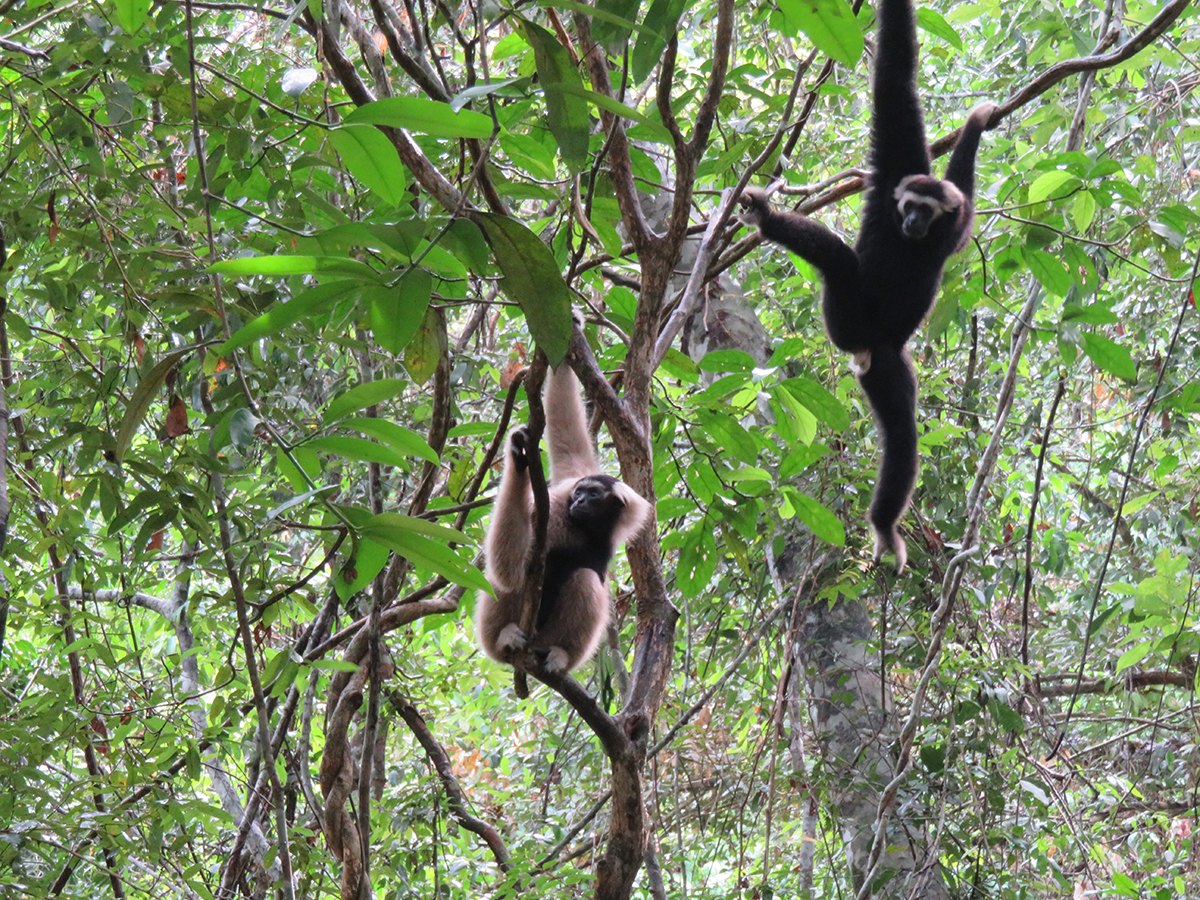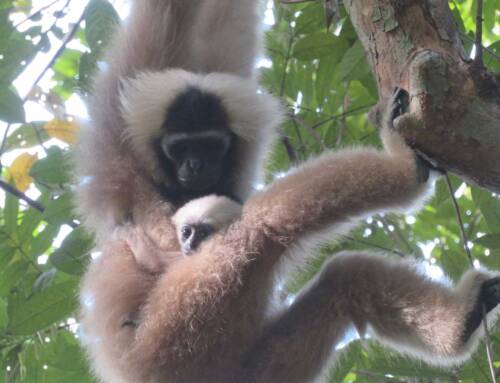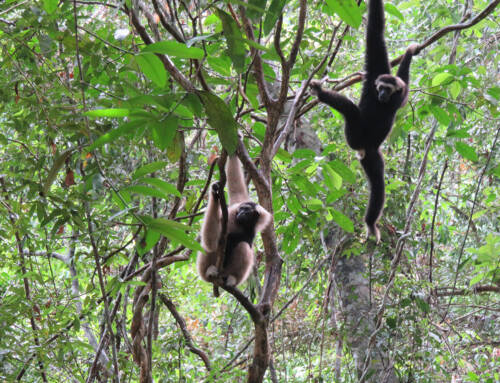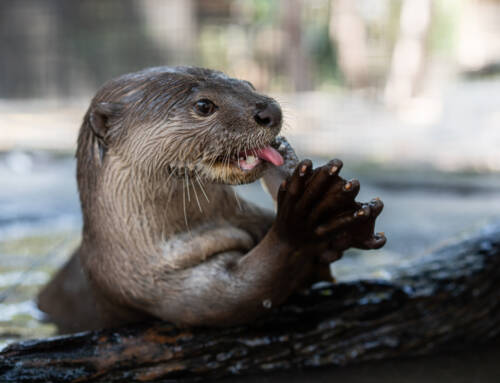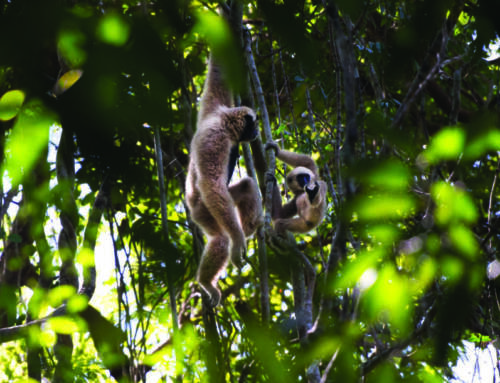In December 2013 Baray and Saranick took their first steps towards freedom. Captive born pileated gibbons from Phnom Tamao Wildlife Rescue Center; their parents were likely victims confiscated from the illegal wildlife trade. They would go on to become the first of over eight species, and 30 individuals released into the Angkor Archeological Park in our reintroduction program in cooperation with the Apsara Authority and the Forestry Administration over the last 10 years.
When we consider the past and think of the animals that would have once called these great forests surrounding the temples their home, this is just a small step to re-establishing populations into their former habitats to help restore ecological balance and biodiversity. But what a great step it has been. Not without its ups and downs, there have been many challenges along the way, particularly when it comes to managing the ever-growing population of pileated gibbons (Hylobates pileatus). Gibbons are generally monogamous for life, and given we are starting with such a small population, managing genetic diversity is of utmost importance. Five pairs have now been released, four of which have been successful, three of which have gone on to reproduce with now eight offspring between them.
Ensuring the success of the releases requires constant monitoring by the Keepers and oversight from the Release Manager. Each individual is named, with the parents having many names associated with Angkor, and the offspring names following a theme of Khmer insect names. As older siblings are pushed out of the territory by the parents, monitoring occurs to ensure they take up new territories or they are recaptured, paired, relocated, and released again. Individuals are tracked through their territorial vocalizations and monitored at supplementary feeding stations, where they are offered two feeds per day. This reintroduction program is considered a ‘soft’ release program in that food continues to be provided should the individuals require it, and the animals receive ongoing monitoring and management. The alternative considered a ‘hard’ release, where individuals are released immediately without further monitoring or management, have included species such as silver langurs, common palm civets, elongated tortoises, and green peafowl.
In addition to the gibbons, and the species named above we have also reintroduced smooth-coated otters, leopard cats, muntjac, and hornbills. Again, a small selection of the biodiversity that would have once existed in the region, however a great starting point, and one that we plan to continue building on with future aspirations for the release of a greater variety of species and more individuals of those already released. With the passing of this first decade, we continue to look forward to the next. We’re incredibly grateful for all the support we’ve had for this, and all, our programs, and look forward to continuing to rewild Angkor.

